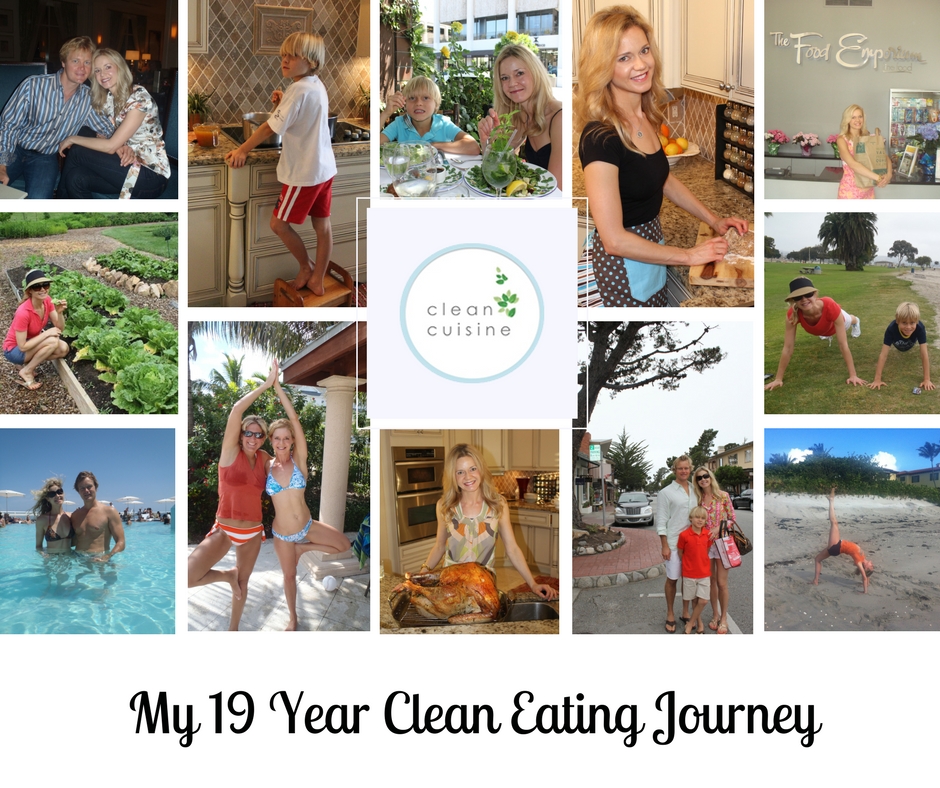
Someone new to Clean Cuisine recently emailed to ask how long I had been following a clean food diet. I responded saying it had been 19 years (gosh, time flies!) I also gave her the short version of my story and the personal health crisis that motivated me to radically change my lifestyle at such a young age.
But after sending the email I realized in some aspects, the way I eat today is different than when I first started my clean food diet journey (and it has definitely been a journey!) When I started, it was 1998 and I was just twenty-two years old. I have definitely learned a lot about nutrition over the last two decades and not everything I do today is the same as it was back in 1998. I thought I would share some of the changes I have made. I also though maybe some of you who have kept up with me over the years might be curious as to how my health is today.
So whether you are new to Clean Cuisine or whether you have been with us since the first Gold Coast Cure book (back in 2005!), I figured I would give you a little update here.
But first, why did I even change my diet in the first place?
My Why
The super short version is that I was diagnosed with multiple sclerosis (MS) at the age of twenty-two. Multiple sclerosis is an autoimmune disease that begins with localized inflammatory damage to the myelin sheath that surround nerve fibers as a result of an attack by the immune system. At it’s worst, the disease can be disabling or, in rare cases, even lead to premature death.
The diagnosis came as a huge blow but I was lucky to be diagnosed in the very early stages of the disease. I feel I was especially lucky that my neurologist told me that an anti-inflammatory and clean food diet could potentially slow the progression of my disease.
I consider myself extremely lucky because recommending dietary modification was not, and is still not, considered the standard of care for MS. The vast majority of MS patients are never told about the role an inflammatory, processed food diet can play in accelerating the progression of their disease.
MS is Not the Only Inflammatory Disease
The common thread linking MS with so many seemingly unrelated conditions is inflammation. Millions of Americans suffer with inflammatory conditions (such as heart disease, arthritis, fibromyalgia, etc) and so many of them could benefit from following an anti-inflammatory diet. Unfortunately, the vast majority of doctors never discuss diet with their patients.
Nothing to Lose
Keep in mind, when I was first diagnosed it was 1998 and clean eating was not a “thing” with the public in general. I didn’t even know there was such a thing as an “inflammatory” or “anti-inflammatory” food. However, my now husband, Andy Larson, M.D., was finishing medical school at the University of Pennsylvania at the time I was diagnosed and he did extensive research at the University’s library (this was also before the internet was a “thing”!) on the potential benefits of an an anti-inflammatory diet for MS. Once Andy reported back on his findings and summarized the results of the available nutrition research related to MS, we both quickly came to the conclusion I had absolutely nothing to lose by cleaning up my diet.
Looking back, it should have been common sense that anyone with any autoimmune disease should probably not be eating ice cream, pizza and cheeseburgers. But 1998 was before the Dr. Oz Show and before the idea of food as medicine was something that had really caught on. To be honest, I actually had a hard time imagining how the food I ate could possibly impact a disease as serious as MS.
But I figured I had nothing to lose. At the time I was diagnosed I was wearing a catheter and having a hard time going up the stairs. I couldn’t imagine eating clean could make it any worse.
Not only did it appear that cleaning up my lifestyle didn’t have any downsides, it soon became apparent that the anti-inflammatory whole foods forming the foundation of my new diet were also incredibly nutrient-dense. In all likelihood, I had a tremendous amount to gain from adopting this new way of eating.
A Non-Conventional Approach
Nutritional therapy is not the standard of care for MS patients. The use of disease-modifying medication is most definitely the conventional approach for the treatment of MS. However, the medications offered in 1998 were contraindicated during pregnancy and because I desperately wanted children, I decided to give the anti-inflammatory clean food diet a try before beginning the medication.
Nineteen years have passed, I had the baby I always wanted…and I still have not needed to take any medication for my MS.
And Yes, I Raised My Son to Eat Clean Too…

Three months after I was married I was pregnant with our son, Blake. Born in 2001, Blake is 16-years old today. I won’t go on and on about how to raise a kid to eat clean, but I will just say it is absolutely possible. And I believe the healthy diet has made a world of difference in our son’s health too.
At 16-years old, Blake has only been on antibiotics once in his life. He doesn’t have allergies, asthma, ADD, ADHD or any real health challenge. In fact, he rarely even gets a cold! It can’t be genetics either because I was sick and on antibiotics all the time as a kid.
If you do have kids and are trying to raise them on a clean food diet here are a few resources that might help:
- 2 Simple Tips for How to Get Kids to Eat Healthy
- ‘First Bite: How We Learn to Eat’ and Why It Matters
Also, I think it is important to point out that in all likelihood, a clean eating diet slows the growth in children. This Is Not a Bad Thing! Kids are reaching puberty at a younger and younger age. For girls, the average age of puberty has fallen 5 years since 1920. The younger a child hits puberty, the faster they age. That is not a good thing.
I realize this blog update is not supposed to be about kids nutrition though, so I will move on =)
My Health Today
Having just celebrated my 41st birthday, I feel incredible gratitude for my good health today. In just about every way, I am healthier now than I was in my early twenties.
When you are in your twenties you take your health for granted, but now that I am in my forties I realize that aging healthfully requires a serious commitment.
MS aside, my blood pressure, cholesterol, C-reactive protein (a marker of inflammation), weight, etc. are all in the very healthy range.
As for the MS, there are only very subtle symptoms that I sometimes notice. Occasionally I experience the annoying “foot drop” with my right foot when walking. If I don’t get enough sleep, especially over the course of several days, I will get debilitating fatigue. It’s a fatigue I simply can’t push through and it is one of the most common symptoms of MS. Luckily I only experience the debilitating fatigue if I don’t get adequate sleep. I also sometimes experience the “brain fog” issues so many people with MS complain about. And very occasionally I will get muscle twitching in my thigh (always in my right thigh.) But really, the symptoms are so minimal that I would never even think to go to the trouble of seeing a doctor to have them checked out.
And, knock on wood, I have not had a true MS exacerbation for 19 years.
My Biggest Health Challenge
A clean food diet is certainly not the cure all for everything. Eating clean did not help me overcome when my biggest health challenge to date…the hip ordeal.
The hip ordeal was related to a congenital disorder (femoral retroversion) and has nothing to do with the MS though. It was something that could only be fixed with a major surgery. Since it is unrelated to diet, I won’t go into the hip story in detail here, but you can read the more about it on our story page.
Pain Management Perk
I will just say this though, I do think my clean food anti-inflammatory diet helped relive the pain of my hip disorder and prolong the need for surgery for many, many years. My congenital hip disorder resulted in a hip labral tear, which is well-known to be a very painful condition. I did ultimately require surgery, but I had the labral tear for years and was still able to exercise and manage quite normally for over a decade.
But of course clean eating was not the ultimate cure. In the end, the cure came from a 7 1/2 hour femoral osteotomy surgery (thank you Dr. Robert Buly!!)
What I Have Changed Over the Years
In all of my books I have always started off by telling my story and how I changed my diet practically overnight after my 1998 health scare. That is true. However, I most definitely did NOT learn what I know now about nutrition and what I believe to be the optimal clean food diet overnight.
 My knowledge of nutrition has been acquired slowly over many, many years. My most recent book, Clean Cuisine: An 8-Week Anti-Inflammatory Nutrition Program that Will Change the Way You Age, Look and Feel (see photo left), does the best job of putting what I do today into a complete program. But even then, I am always learning more when it comes to nutrition. Learning is an ongoing process.
My knowledge of nutrition has been acquired slowly over many, many years. My most recent book, Clean Cuisine: An 8-Week Anti-Inflammatory Nutrition Program that Will Change the Way You Age, Look and Feel (see photo left), does the best job of putting what I do today into a complete program. But even then, I am always learning more when it comes to nutrition. Learning is an ongoing process.
What Does It Mean to “Eat Clean”?
Although the concept of “clean eating” is most definitely trendy at the moment, if you ask a “clean eater” to define clean eating you’ll get a number of very different answers.
What Has Clean Eating ALWAYS Meant to Me?
From the very beginning, my goal with adopting a clean food diet has been to accomplish two things:
- Reduce inflammation
- Optimize nutrition
I have never been able to categorize my clean diet as being “low carb”, “low fat”, paleo, grain-free, vegan, vegetarian, raw, etc. Because the way I eat does not fit neatly into any of the trendy diet categories.
My definition of clean eating is a diet based on anti-inflammatory whole foods packaged in their most natural and nutrient-rich state.
This means I look for whole foods that are unrefined and unprocessed…just the way nature intended. I choose corn instead of corn flakes, steel cut oats instead of a granola bar that is “made with oats” (but also made with a bunch of junk like high fructose corn syrup, processed corn oil, etc.) If push came to shove, I would even choose whole olives over olive oil.
The closer a food is to its natural state, the healthier it will be.
From the beginning, starting in 1998, these beliefs have formed the foundation of my clean food diet. However, as I have studied nutrition more, I have come to believe that we should be eating more plants and less animals.
Just as our tagline on the top of our website says….
CLEAN CUISINE = MORE PLANTS, LESS ANIMAL FOOD
If you happen to have our Clean Cuisine book, the food pyramid below is shown on page 11. This pyramid gives a good snap-shot of what eating more plants and less animals might look like in real life.
Dating back to my first book, The Gold Coast Cure (HCI Books, 2005), animal-based saturated fat was always something I kept to a minimum. However, over the years I have learned more about the negative health consequences of a diet rich in animal foods. I have also learned about the incredible health benefits of adding more plants to your plate.
Plant Power!
Unrefined plant foods are the only source of anti-inflammatory, anti-aging phytonutrients, which play a key role in the health benefits obtained from adopting a clean food diet.
Phytonutrients are substances that protect the plant and fortify it against illness, but they also offer invaluable disease protection and anti-inflammatory benefits to YOU, the plant-eater. Phytonutrients act in a myriad of health-promoting ways.
Many phytonutrients are sources of natural anti-aging antioxidants and others act as powerful inflammation extinguishers. Some phytonutrients enhance immune function and promote healing. Others stimulate enzymes that detoxify cancer-causing carcinogens.
In a nutshell, the more plant-based phytonutrients you can manage to get into your diet, the better!
And the only way possible to get more phytonutrients is to eat more plants and less animal foods. There’s just no way around it.
Thus, one of the biggest changes I have made in my diet over the years is to place a heavy emphasis on plant-based nutrition.
When it comes to adopting a clean food diet, you should take into consideration that unrefined plant foods are lowest on the food chain. Whole plant foods will therefore contain considerably fewer toxins than animal foods.
But I am Not Vegan
As much as I emphasize the importance of eating more plants, I am not vegan for these reasons.
You can read more about the nitty gritty of the clean food diet we outline in our Clean Cuisine book HERE.
In addition to overall adding more plants and less animal foods to my diet, I also thought I would share ten specific clean food diet upgrades I have made over the last 19 years…
10 Clean Food Diet Upgrades
1. I Eat WAY More Fruits & Vegetables
I eat WAY more fruits and vegetables today than I did when I first started cleaning up my diet. (By the way, did you know the #1 biggest diet mistake people make is not eating anywhere near enough fruits and vegetables?) I would say these days I eat at least 10 servings of fruits and vegetables a day. That might sound like an enormous amount, but keep in mind the “official” serving sizes of fruits and vegetables is rather small.
2. I Use a Superfood Cooking Oil
I had no idea until the last year or so that unrefined organic Red Palm Oil is one of the most nutrient-dense oils on the planet. It is also LOADED with antioxidants. One tablespoon contains a whopping 240% of your Daily Value for vitamin A and 25% of your Daily Value for vitamin E! Red palm oil is not the only oil I use to cook with, but I would say I use it about once a day for medium-heat cooking.
3. I Eat A LOT More Phytonutrients
Phytonutrients act as super potent antioxidants and anti-inflammatory agents. In addition to eating more plant foods, I also take a phytonutrient “booster” (Juice Plus+, Green Vibrance, and Mega Nutrition Organic Superfood are all good choices.)
4. I Choose Clean Seafood
When I started eating fish to get more omega-3 fats, I had no idea that farmed fish could potentially be an inflammatory food (due to having too much omega-6 fat.) I now make it a point to only choose the cleanest and healthiest fish.
5. I Supplement with Additional L-Methylfolate
About a year and a half ago I discovered I had the MTHFR gene mutation. It is estimated that almost 50% of the population carry a mutation of their MTHFR gene. Individuals with the MTHFR gene mutation have a reduced capacity to manufacture L-methylfolate, the active form of folate (one of the body’s essential B vitamins.) L-Methylfolate is essential for biological processes throughout the body involving methylation. Without optimal levels of this essential nutrient there can be a significant breakdown of the body’s ability to produce healthy DNA, have healthy neurotransmitter production, and optimal cardiovascular, hormonal, cellular, liver and reproductive functions. The vast majority of nutrition supplements contain the synthetic (or “man-made”) folic acid rather than the L-methylfolate form that your body uses best. To compensate for the MTHFR gene mutation, I take our own brand of Clean Cuisine Multi-Vitamin/ Multi-Mineral (which contain L-methylfolate) and I also supplement with an additional 7.5 mg of L-Methylfolate from Methyl-Pro. Plenty of other high quality multi-vitamins containing L-methylfolate are on the market (I especially like Hardy Nutritionals brand), but just like with food labels, you need to carefully read the ingredients on supplement labels. Note: To find out if you have the MTHFR gene mutation, ask your functional medicine doctor for a simple and inexpensive saliva test.
6. I Drink the Most Nutrient-Dense Plant Milk
When I first adopted a clean food diet almost 19 years ago, I was under the impression that milk was a nutrient-dense whole food. I have since changed my mind (here are the top 10 reasons I no longer believe milk does a body good) and switched to a plant-based milk. But not all plant-based milks are created equal from a nutritional standpoint. There are numerous dairy milk alternatives on the market, but I am convinced hemp milk is the most nutrient-dense and most anti-inflammatory. You can read more about the health benefits of hemp seeds and why I believe hemp milk is the best plant-based milk alternative and why it is my milk of choice.
7. I Eat Prebiotic and Probiotic Rich Foods and Also Take a Broad Spectrum Probiotic Supplement
When I started researching a clean food diet back in 1998 I really didn’t come across a lot of information regarding the importance of gut health in relation to overall health. But as the years have gone by, I’ve come to realize the bacteria in our gut play a big role in fostering a strong immune system, natural detoxification and optimizing our overall health. Our gut microbiome even determines how well we absorb the nutrients from our food! Eating a diet containing a wide variety of probiotic (I primarily choose non-dairy probiotic rich foods) and prebiotic rich foods is important for having a healthy and strong gut microbiome. These day, I make sure to eat plenty of fermented foods in addition to prebiotics such as garlic, onions, bananas, etc. I emphasize the fact that I choose a wide variety of probiotic and prebiotic rich foods because when it comes to optimizing gut health, microbial diversity is very important. I have also added a probiotic to my supplement regimen. I take our own brand of Clean Cuisine Probiotics, which contains a broad spectrum of highly bioavailable and dairy free “friendly” bacteria that have been clinically documented for their effectiveness (such as Lactobacillus, Bifdobacterium and Saccharomyces among others). Plenty of other good probiotic supplements are on the market (I especially like Dr. Ohhira’s brand) but it is super important to look for a high quality one if you actually want to see results. Note: We explain in detail how to choose a high quality probiotic supplement in our Clean Cuisine book on page 279.
8. I am BIG Into Turmeric
Turmeric is truly a health-promoting miracle spice. I didn’t know a thing about the anti-inflammatory, mood-boosting or disease-prevention benefits of turmeric back in 1998, but I sure wish I did! Turmeric has since become a staple ingredient in my kitchen. It is worth noting that adding just a little fat and a pinch of black pepper boosts the absorption rate of turmeric tremendously. In addition to eating it, I find the miracle spice does WONDERS for brightening my skin! I make a turmeric facial mask with lemon, goats milk yogurt and manuka honey at least 2 times a week. I swear by the mask. In addition to the beauty benefits, I learned a lot about the pain-relieving properties of turmeric while going through my hip ordeal. I have since switched from using over-the-counter pain relievers (such as Advil) to turmeric supplements. To get pain relief, you need to take a high enough dosage, but I find between 1,500 mg and 2,ooo mg of a high potency turmeric supplement with bioperine (black pepper) does the trick. If you don’t want to cook with turmeric regularly, you can also take a supplement. But if you just want to cook with it, I have plenty of turmeric recipes on the blog. Here are a few of my favorite:
- Turmeric Ginger Detox Tonic
- Slow Cooker Turmeric Chicken
- Turmeric Salad Dressing Recipe
- Liquid Gold Turmeric Smoothie
- Turmeric-Orange Detox Smoothie/ Popsicles
- Tumeric Tea Recipe
9. I Avoid GMOs & Look for Biodynamic When Possible
Up until a few years ago, I did not know glyphosate was something to be concerned about. I did’t even know what it was to be honest. But I now know glyphosate is a toxin found in genetically modified food (GMO). Glyphosate is just one of the reasons to avoid GMOs if you are serious about a clean food diet. It is also the active ingredient in Monsanto’s broad spectrum pesticide, Roundup. Over 90% of the GMOs that have been introduced have been designed to make crops herbicide resistant. This means farmers are free to use as much glyphosate-containing Roundup as they want without killing the crop. In 2015, some 220 million pounds of glyphosate-containing Roundup were used in the United States. The toxic pesticide is used on everything from row crops to home gardens. And yet, it has been linked to numerous health concerns. For one, Glyphosate causes extreme disruption of your gut microbiome. What’s worse, glyphosate preferentially affects the “good” bacteria, allowing pathogens to overgrow and take over, which leads to a state of chronic inflammation. There is also serious concern that the glyphosate in Roundup could be cancer-causing as it has already been clearly linked to B-Cell Lymphoma (see this study). I personally do not feel genetically modified food is safe. Going organic is one way to avoid GMOs. However, just like becoming aware of the Environmental Working Groups Clean Fifteen and Dirty Dozen, you can also educate yourself to learn more about which foods are most likely to have GMOs. And finally, if you want to be serious about getting the most nutrient-dense food possible, be on the lookout for biodynamic farming. Similar to organic farming, biodynamic farming methods prohibit the use of hormones, pesticides and GMO’s. However, biodynamic farming goes one step further. In other words, biodynamic farming is even better than organic. You can read more about biodynamic farming here.
10. I Choose “Whole” Fats Over Oil (When Possible)
Which is healthier, an avocado or avocado oil? “Whole” raw walnuts or walnut oil? Flaxseeds or flaxseed oil? In every example, the whole food (or “whole” fat) is nutritionally superior to the oil. This is because the same pitfalls that apply to juice apply to oil. Even if you were to drink the absolute highest quality cold pressed juice in existence, you would still be better off eating the “whole” fruit (here is a short video I did a while back explaining why juicing is not as healthy as you may think.) Like oil, juice is a refined food. To manufacture both oil and juice, you first need to process the original food to some degree. Keep in mind, as soon as a food becomes processed, the nutritional content declines. If you swap “whole” plant-based fats such as nuts, seeds, olives and avocados for excess oil, you’ll get more nutrients. Specifically, you will get more fiber, phytonutrients, disease-preventing plant sterols, and a number of other micronutrients that would be much more useful at promoting health and reducing inflammation compared to consuming oils alone. If you happen to have our Clean Cuisine book, we dedicate an entire chapter (chapter 5) to Fats, but you can also read more about the benefits of choosing whole fat verse oil here. And for the record, I have most definitely NOT eliminated oil from our kitchen (see #2 above!), it’s just that I am now aware of the fact that eating the “whole” fat is better. I therefore just try to go easy on the oil when I prepare foods, that’s all.
Some Things Never Change….
The following seven nutrition goals were what formed the foundation of our very first book back in 2005. I still follow these clean food diet guidelines to this day!
- I still avoid processed foods and trans fats.
- Refined carbohydrates have always been on my “do not” eat list.
- Keeping my animal-based saturated fat intake low has been a major dietary goal from the day I started to clean up my diet (note: I do now eat a lot more unrefined extra virgin coconut oil than I did in the past.)
- I still make it a point to get plenty of essential fat and to optimize my ratio of omega-3 to omega-6 fat.
- Avoiding refined omega-6 rich vegetable oils has always been a priority.
- I still make sure to eat plenty of fiber.
- Now, more than ever, I am conscious of trying to increase my intake of micronutrients (antioxidants and phytonutrients) from plant based whole foods.
So that’s it! As you can see, it has definitely been a journey. If you are new to clean eating, I so hope you find the information here helpful. I have also included a few more additional resources below. And of course, there are LOTS of clean recipes on the blog if you want to start cooking clean!
Clean Food Diet Resource Pages You Might Find Helpful:
- 50 Eat Clean Lifestyle Tips
- Clean Cuisine Defined & How I Define Clean Eating
- The 5 Most Anti-Inflammatory Foods
- The 8-Week Clean Cuisine Challenge (this is a FREE online program)
- How an Anti-Inflammatory Clean Eating Diet Slow Aging
- Clean Cuisine Kitchen Shape Up (this is a FREE printable guide)
- Clean Cuisine One Week Meal Plan (this is a FREE printable guide)
- Multiple Sclerosis Healthy Guidelines (this is a FREE printable guide)
————————————————————————————————————————————————————————————————————————–
LOOKING TO CLEAN UP YOUR LIFESTYLE & ADOPT AN ANTI-INFLAMMATORY DIET?
Be sure to check out our Clean Cuisine book! The book outlines an 8-Week Anti-Inflammatory Diet and lifestyle plan, including fitness program, nutritional supplement regimen, recipes and more!




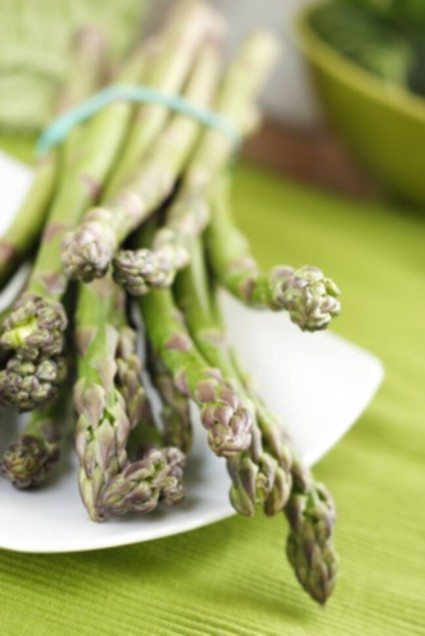


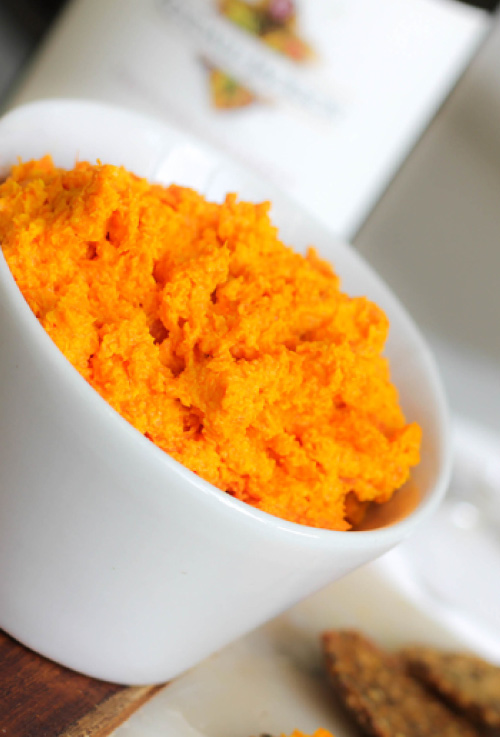
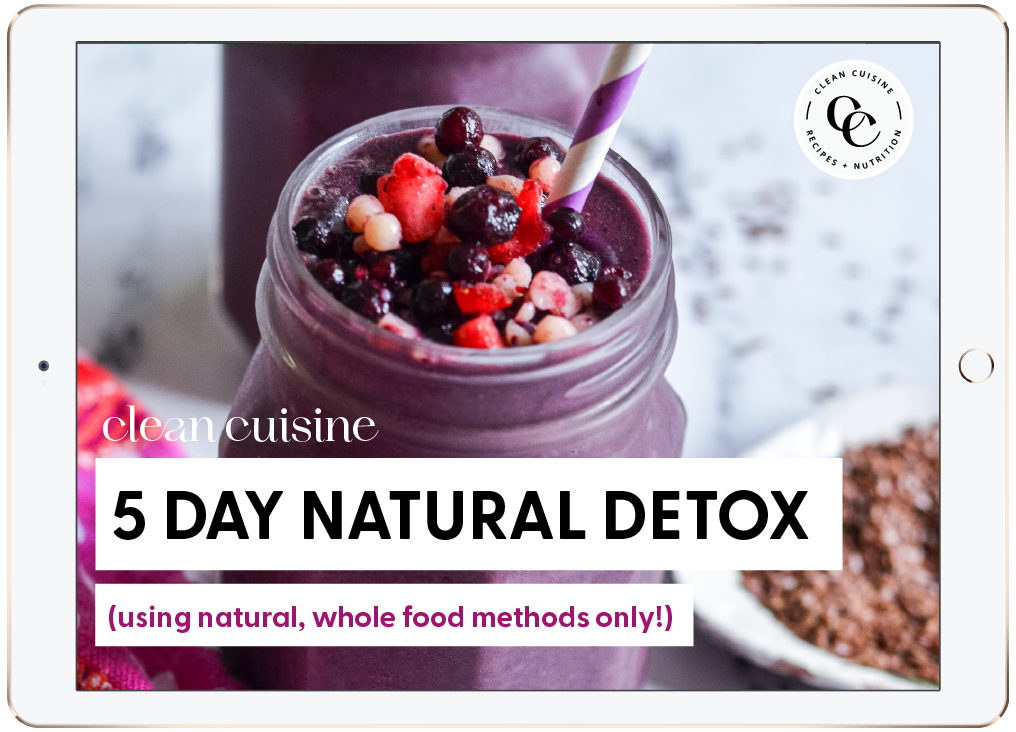
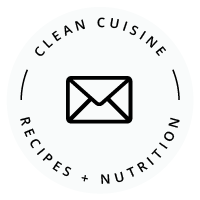
Valerie
Tuesday 23rd of May 2017
Interesting to read about your journey, and I love how you have continued to refine your approach as you learn more.
I just started your eight week challenge after reading your reader's success story, and I just had to tell you my kids loved the green goddess hemp smoothie. I often make green smoothies, and my kids won't drink most of them, so this one will go into the regular rotation!
Ivy Larson
Wednesday 24th of May 2017
Hi Valerie! Thank you so much for commenting and I am thrilled to know your kids like the Green Smoothie ;) Please let me know how things go on the Challenge. Wishing you lots of luck!